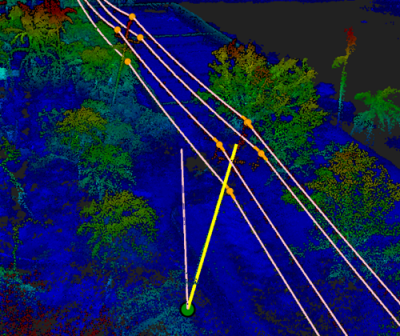[This is the second part of SPAR’s coverage of the ILMF UAV workshop.]
Liabilities, Liabilities
Sure, these things can make you money, Jeff Cozart of Juniper Unmanned explained during his presentation, but there are significant risks to using them commercially that shouldn’t be ignored.
“First thing, UAS is said to be a disruptive technology, they’re going to have a huge impact. One thing that I noticed is the level of exuberance in audiences–as we’ve talked about unmanned aircraft for the last five years, I’ve watched the size of the audience grow tremendously.”
“But,” he continued, “the fact is that we’re not operating without a risk.”
He showed a picture of a man with a cut in his arm many inches long, sewed up by stitches but still raw. “This guy who was operating a DJI Phantom, perfectly legally, there’s a video of him up on youtube and in this flight he’s coming in for a landing and he just happens to reach out and the blades cut him.”
[The video is below, but not recommended for the squeamish.]
This isn’t a big deal if you’re operating a drone for fun, he explained but is not so simple to handle if you’re flying the drone commercially. “The guy probably has health insurance,” Cozart says, “he goes to the hospital and gets his stitches and he’s good to go. But if we’re operating as commercial interests and this kind of accident occurs, there are repercussions that we need to consider throughout the entire process.”
The issue of airworthiness is a big one, he explained, as it hasn’t yet been decided who is liable if a UAV fails and causes damages or injury. We all know how the process of liability works with automobiles: “If you’re operating your own personal vehicle there’s trust, you know that the system’s been worked out by a set of engineers and attorneys in the background so that if something goes wrong with your vehicle, you realize that there’s recourse to it.”
“With an unmanned aircraft system right now some of that hasn’t been settled in law,” he said, but one thing that is clear is that much of the recourse falls back to the public organization operating the vehicle. That means you.
“In a public setting, you sign an airworthiness statement that says your public organization takes the responsibility for the liabilities associated with the engineering itself of the craft. So the airworthiness test, while it’s not required of the FAA, there’s a recourse that pushes back to the public organization to certify that they have established airworthiness.”
So what does that look like for your organization? “If an accident occurs, will you be able to point back to the manufacturer and say ‘this is a faulty design’? Perhaps. How about the distributor who sold that aircraft system to you? They didn’t tell me that there was something wrong with this, so should they be liable? Or what about the operator themselves? Who’s going to bear the liability of the airworthiness of the craft?”
In other words, UAVs can certainly make you money, but unless you’re careful they might cost you some as well.
UAVs Already in the Air
Colin Snow of Drone Analyst started his presentation with a quick survey. “By show of hands, how many of you are totally new to drone technology and came to these sessions to find out the basics?” He counted maybe 10-15% of the audience. “How many of you are already familiar with drone technology and want to learn more?” Most of the room raised their hands. “How many of you have ever operated a remote-control model aircraft?” About 50% of the room.
Finally, the big one: “How many of you think you might add a UAS to your commercial surveying or mapping services?” Granted, the sample set was affected by our being gathered for a UAV workshop, but about 70% of the room raised their hands.
Over the course of his presentation, Snow answered the questions “How accurate are these things?” and “can I make money with it?” The answers were–depending on your application, possibly accurate enough; and, yes. The general theme was that there are a wide range of UASs out there, and if you select the right one there is a pretty good chance you could use it to make some money (just beware of the liabilities!)
Perhaps his best suggestion, though, was to fly consumer drones so you can get some practice in before shelling out for a commercial drone. “In general, consumer drones are pretty easy to operate,” he said. “They serve as a really good learning platform. There’s plenty of inexpensive, and even free, off the shelf software to do orthos and 3Ds.”
Get your practice in, he said, and then carefully consider your applications before moving to the commercial level.
Commercial UAV Expo, a new trade show and conference organized by SPAR 3D, will take place October 5-7, 2015 in Las Vegas. It focuses on the commercial UAV/UAS market in North America covering including Surveying & Mapping; Civil Engineering & Infrastructure; Mining; Construction; Process, Power & Utilities; Precision Agriculture; and Law Enforcement, Security, Emergency Response.






